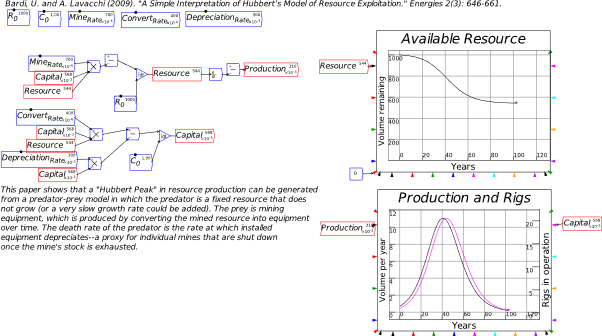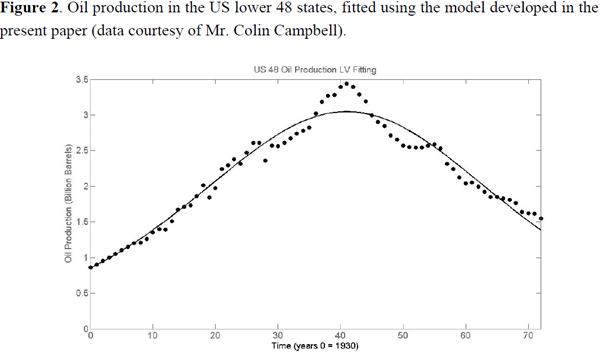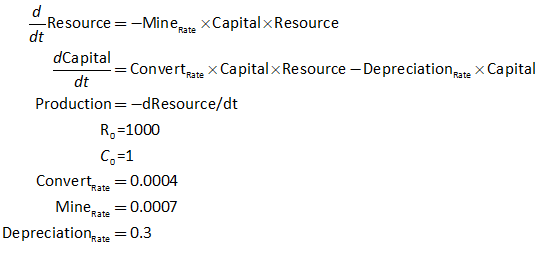Blair Fix’s excellent new post “A Case Study of Fossil-Fuel Depletion” alerted me to the fact that Ugo Bardi had written a paper “A Simple Interpretation of Hubbert’s Model of Resource Exploitation” (Bardi and Lavacchi 2009) in which he had modelled Hubbert’s Peak as an outcome of a predator-prey system in which the prey did not reproduce.
The idea was that mining depletes reserves (obviously), while the mining also allows the producsktion of mining equipment. The mining equipment also depreciates, not so much because of just physical wear and tear, but because when a mine starts to run dry, the machinery is abandoned and no longer “alive” in that sense.
I thought this was a brilliant idea—and brilliantly incorporated into Blair’s post as well. It was also rather inaccessible, since the models in Bardi’s and Lavacchi’s paper were done in Vensim, while the fitting was done in Matlab and Simulink. All of these are expensive commercial programs. So, I thought I’d whip up the model in Minsky.
Figure 1: The Bardi-Lavacchi modified predator-prey model of resource depletion

Unfortunately, the paper didn’t include the parameters for the models, so I just played with some default initial conditions (Resource stock = 1000, initial Capital = 1) and changed the parameter values until I got the same date for “Peak Oil” as in the paper and Hubbert’s own work—oil output peaking roughly 40 years after the start of large-scale oil mining in the continental USA

The advantages of Minsky over Vensim (and Simulink) for this sort of work includes dynamic graphs—not just ones you see after clicking the “Simulate” button—and an easy export of the model equations via LaTeX:

There are several interesting features of this model—and realistic ones as well. Firstly, the feedback system between mining, capital creation and depreciation means that the full resource isn’t mined—which we’re seeing empirically anyway, long before global-warming-induced bans set in. Secondly, the number of rigs (the predators) peak slightly after production peaks, and then follows production down. This was the empirical point most emphasized by Blair in his post.
Most of all, it portrays humans and their mining of the planet’s resources as predators—which we are. We forget this as we plunder our way forward on the assumption of everlasting growth. A predator-prey perspective emphasizes, on the other hand, that, as George Harrison once sang, “All things must pass“.
Bardi U, Lavacchi A (2009) A Simple Interpretation of Hubbert’s Model of Resource Exploitation. Energies 2 (3):646-661